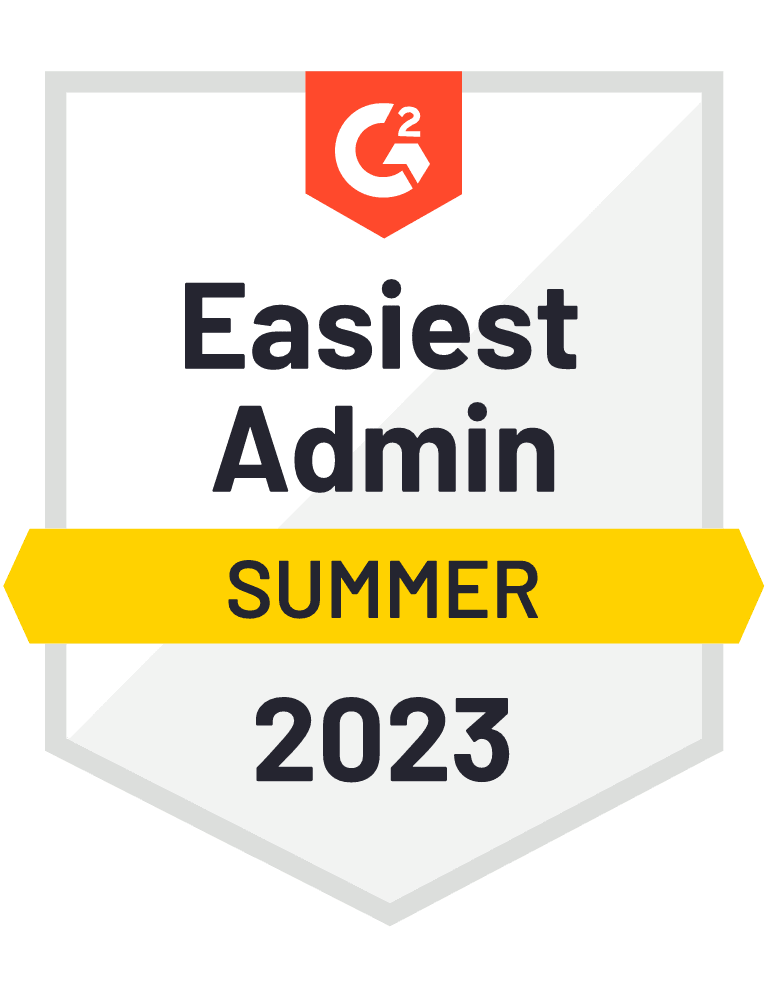Top 16 Call Tracking Metrics to Drive Success:
Definitions & Strategies

You can’t improve what you can’t measure. To succeed, you first need to know what success looks like. And that’s where call tracking metrics come into play. Discover the most important KPIs for your call center use case and become a market leader today!
Key Takeaways:
- Call tracking metrics are essential analytical tools used to evaluate the performance and effectiveness of inbound and outbound calls and optimize processes to maximize customer satisfaction and revenue.
- Call tracking metrics are vital in evaluating marketing ROI, improving customer satisfaction, informing data-driven decisions, and boosting agent performance.
- Compare you Conversion Rate, Average Call Duration, Call Disposition, Lead Response Time, Dialing Efficiency, Pipeline Velocity, Appointment Setting Rate, Follow-Up Rate, Average Speed of Answer, First Call Resolution Rate, Average Handling Time, Call Abandonment Rate, Customer Satisfaction, Issue Resolution Rate, Call Escalation Rate, Service Level to global benchmarks.
What Are Call Tracking Metrics?
Call metrics are essential tools all market-leading organizations use to evaluate the performance and effectiveness of their call center operations. These metrics can focus on and offer valuable insights into various aspects of the business to help identify areas for improvement and optimization, including quality, efficiency, and success.
Call center managers and supervisors primarily use call center metrics to monitor, analyze, and optimize performance across both inbound and outbound operations. As such, they play a critical role in customer support and sales, where they can reveal contributing factors to overall customer experience, satisfaction, and conversion rates.
To give you some more context into how metrics play into your company’s success, you can imagine the hierarchy of data and goals in your organization like this:
High-Level Goals > Key Performance Indicators (KPIs) > Metrics
To put it simply, metrics denote raw data that describe the numeric value of whatever it is that you’re observing, while KPIs are carefully combined sets of metrics that are directly relevant to any given organizational goal. Here’s an example:
Metrics
KPIs
Organizational Goals
- Sales Revenue
- Number of Sales Calls
- Avg. Deal Value
- Customer Acquisition Cost
- Lead-Gen Rate
- Customer Churn Rate,
- Website Traffic,
- Marketing ROI.
- Sales Growth,
- Conversion Rate,
- Customer Lifetime Value,
- Sales Pipeline Velocity
- Higher Revenue
Discover how Poliglota used CloudTalk to boost its agent productivity by 10%
What Are the Key Call Tracking Metrics to Monitor?
As you can imagine, which calling metrics are most important to you depends on several factors, including your industry, size, and current business goals. However, there are several that most businesses use.
Below, you’ll find the call center metric definitions of the most popular examples and global averages against which to benchmark your results.
Sales-Oriented Metrics for Outbound Operations
1. Conversion Rate: The percentage of outbound calls that result in a desired outcome, such as a sale, appointment booking, or lead generation. It measures the effectiveness of outbound sales efforts in converting prospects into customers or qualified leads.
2. Average Call Duration: The average length of time spent on outbound sales calls. This metric provides insights into the efficiency of sales conversations and helps identify opportunities to streamline interactions and improve productivity.
3. Call Disposition: A classification of the outcome or result of each outbound sales call, such as “no answer,” “interested,” “not interested,” or “callback requested.” Analyzing call dispositions helps sales teams track progress, prioritize follow-ups, and tailor future interactions based on prospect responses.
4. Lead Response Time: The time elapsed between receiving a lead and making the first outbound sales call. Rapid response times are crucial for engaging prospects while their interest is high and increasing the likelihood of conversion.
Note
Global Benchmark:
Vary between industries:
- Healthcare: 2 hours and 5 minutes.
- Telecommunications: 16 minutes.
- Small Business: 48 minutes
- Mid-Size Business: 1 hour and 38 minutes.
- Enterprise: 1 hour and 28 minutes.
5. Dialing Efficiency: The ratio of successful connections to attempted outbound calls, often expressed as a percentage. Dialing efficiency measures the effectiveness of reaching prospects and helps optimize calling strategies to maximize contact rates and sales opportunities.
6. Pipeline Velocity: The rate at which prospects move through the sales pipeline from initial contact to conversion. Outbound sales activities influence pipeline velocity and provide insights into the effectiveness of sales processes and the overall health of the sales funnel.
7. Appointment Setting Rate: The percentage of outbound sales calls that result in scheduled appointments or meetings with prospects. This metric measures the success of outbound sales efforts in initiating meaningful engagements and advancing prospects through the sales cycle.
Find out how Leadspicker sped up its sales cycle by 92%.
8. Follow-up Rate: The frequency and consistency of follow-up actions taken after initial outbound sales contacts, such as sending follow-up emails, making callback attempts, or providing additional information. A high follow-up rate is essential for nurturing relationships with prospects and maximizing conversion opportunities over time.
Service-Oriented Metrics for Inbound Operations
1. Average Speed of Answer (ASA): The average time it takes for incoming calls to be answered by a support agent. ASA is a measure of call center responsiveness and customer wait times.
2. First Call Resolution (FCR): The percentage of incoming calls resolved during the first interaction with a support agent without the need for escalation or follow-up. FCR is an indicator of customer satisfaction and operational efficiency.
3. Average Handling Time (AHT): The average duration of incoming calls, from when they are answered by a support agent to when they are completed. AHT measures the efficiency of support interactions and helps identify opportunities for streamlining processes.
4. Call Abandonment Rate: The percentage of incoming calls customers abandon while waiting to speak with a support agent. A high abandonment rate may indicate long wait times or inadequate staffing levels.
5. Customer Satisfaction Score (CSAT): A metric used to measure customer satisfaction with the support experience, typically collected through post-call surveys or feedback mechanisms. CSAT scores provide insights into the quality of support interactions and overall service delivery.
6. Issue Resolution Rate: The percentage of incoming calls in which customer issues or inquiries are successfully resolved. This metric measures the effectiveness of support agents in addressing customer needs and resolving problems.
7. Call Escalation Rate: The percentage of incoming calls that require escalation to higher-tier support or specialized teams for resolution. Call escalation rate indicates the complexity of support issues and may highlight areas for additional training or resource allocation.
8. Service Level: The percentage of incoming calls answered within a specified target time, typically expressed as a percentage within a certain timeframe (e.g., 80% of calls answered within 20 seconds). Service level goals help maintain customer satisfaction and manage call center performance.
What Is Call Center Software?
Generally speaking, call center software is any set of applications and tools designed to streamline call center activities. Nowadays, most call center software solutions on the market are unified virtual platforms.
These platforms feature many functionalities for managing and handling inbound and outbound calls. As such, they’ve become an indispensable part of the tech stack for customer support centers, telemarketing firms, and many other communication-oriented organizations.
We’ll cover the most vital call center features in a subsequent section. All you have to know for now is that the software provides solutions for routing calls, automating workflows, and analyzing performance.
Why Do Call Metrics Matter?
As we’ve discussed, calling metrics are vital in evaluating and improving internal company processes. But what are more specific examples of their contribution to business success? Let’s have a look.
1. Evaluating Marketing ROI
By tracking metrics such as call volume, conversion rate from calls, and average revenue per customer, organizations can determine how marketing efforts translate into actual leads, sales, and revenue.
For example, if a marketing campaign generates a high volume of inbound calls but has a low conversion rate, it may indicate a need for adjustments in messaging, targeting, or sales processes to improve ROI.
2. Improving Customer Support & Sales
Metrics such as first call resolution rate, average handling time, and customer satisfaction scores provide insights into customer support quality and sales interactions’ effectiveness.
For instance, a high first-call resolution rate indicates efficient problem-solving and enhances customer satisfaction, improving customer retention and loyalty. Similarly, metrics related to outbound calls, such as conversion rate and average order value, directly impact sales performance and revenue generation.
3. Informing Data-Driven Decision-Making
By analyzing metrics such as call volume trends, customer feedback, and agent performance, you can identify patterns, trends, and areas for improvement.
This data-driven approach enables organizations to make informed decisions about resource allocation, process optimization, and strategic initiatives.
For example, if call metrics reveal a surge in customer complaints about a particular product or service feature, the organization can prioritize addressing the issue to improve customer satisfaction and retention.
4. Boosting Agent Performance
Metrics such as average handling time, call resolution rate, and adherence to scripts or guidelines provide insights into individual agent efficiency, effectiveness, and quality standards.
Organizations can identify training needs, coaching opportunities, and best practices to enhance performance and productivity by providing agents with regular feedback based on these metrics.
For instance, if call metrics indicate a high average handling time for certain agents, targeted training programs can be implemented to improve their efficiency and reduce call durations.
Strategies To Measure Call Tracking Metrics
Now you have a better idea of what you should be tracking. The question still left open is – how? Nowadays, there are many solutions available on the market that do most of the heavy lifting for you.
Software like CloudTalk can handle all the tracking and data synchronization automatically on your behalf. All you have to worry about is the analysis and optimization.
Leveraging Call Tracking Software
Call tracking software is a powerful tool that enables organizations to monitor, analyze, and optimize call tracking metrics effectively. This software typically provides features such as call recording, call routing, real-time analytics, and customizable reporting capabilities.
By leveraging call tracking software, organizations can implement the following means for measuring call tracking metrics:
- Automated Data Collection: Call tracking software automatically captures and records key call metrics in real-time, eliminating the need for manual data entry and ensuring accuracy and consistency in measurement.
- Customized Reporting: Call tracking software allows organizations to generate customized reports and dashboards tailored to their specific metrics and KPIs. These reports provide actionable insights into call center performance, trends, and areas for improvement.
- Call Recording and Analysis: Call tracking software enables organizations to record and analyze inbound and outbound calls to evaluate agent performance and adherence to quality standards. By reviewing call recordings, organizations can identify coaching opportunities, best practices, and areas for process optimization.
- Integration with CRM Systems: Many call-tracking software solutions integrate seamlessly with customer relationship management (CRM) systems, allowing organizations to correlate call data with customer information and interactions. This integration enables deeper insights into customer behavior, preferences, and lifetime value.
- Real-time Monitoring and Alerts: Call tracking software provides real-time dashboard monitoring capabilities, allowing supervisors to track call volumes, agent availability, and service levels in real-time. Supervisors can set up alerts and notifications to proactively address issues and maintain optimal call center performance.
Comparison
CloudTalk
Justcall
Aircall
RingCentral
Ringover
Call Monitoring
$50
$49
$50
$25
$21
Call Recording
$25
$19
$30
$25
$21
Call Analytics
$30
$49
$50
$45
$44
Call Routing
$30
$49
$30
$35
$44
IVR
$30
$29
$30
$20
$44
Integrations
$20
$49
$30
$20
$21
How to Benchmark Your Call Center Performance
Benchmarking involves comparing key call tracking metrics and KPIs against industry standards, best practices, or internal benchmarks to assess performance relative to peers or established goals.
This strategy helps organizations identify strengths, weaknesses, and opportunities for improvement. Here’s how organizations can leverage benchmarking for measuring call-tracking metrics:
- Identifying Key Metrics: Organizations should identify key metrics and KPIs relevant to their industry, business objectives, and customer service goals. Common metrics include first-call resolution rate, average handling time, customer satisfaction scores, and service level agreements.
- Industry Comparison: Organizations can benchmark their call center performance against industry averages or benchmarks to gauge competitiveness and identify areas for improvement. Industry benchmarking provides context and insights into where the organization stands relative to peers and competitors.
- Internal Benchmarking: Organizations can establish internal benchmarks based on historical performance data, targets, or best practices. Internal benchmarking allows organizations to track progress, set realistic goals, and drive continuous improvement.
- Performance Gap Analysis: Benchmarking enables organizations to identify performance gaps and disparities between current performance levels and desired targets or benchmarks. By analyzing performance gaps, organizations can prioritize initiatives, allocate resources effectively, and implement targeted strategies to close the gap.
- Continuous Improvement: Benchmarking call center performance is an ongoing process that requires regular monitoring, analysis, and adjustment. By keeping an eye on performance and iterating on strategies, organizations can drive continuous improvement, enhance customer satisfaction, and achieve business objectives.
Looking Ahead: The Future of Call Tracking
In an ideal world, the future of call tracking would be one where most work takes care of itself. Well, good news! You’re living in such a world.
Thanks to the recent advancements in AI and machine learning, most software solutions can already provide accurate insights into your company’s performance, and they’re just going to keep improving.
Experts anticipate that in the near future, you’ll be able to automate data tracking, synchronization, and interpretation. Sophisticated tools should be able to propose actionable next-step recommendations based on your calling metrics and company objectives.
Or you can just leave it to CloudTalk.
Transform your call-tracking strategy with CloudTalk – the first 14 days are on us!
What did you find in this article?
What are call tracking metrics?
Call tracking metrics refer to the various data points used to analyze and measure the effectiveness of phone calls generated by marketing campaigns or business operations. These metrics provide insights into call volume, caller demographics, call duration, conversion rates, and more.
What is call tracking?
Call tracking is an analytical technique used to monitor and measure the performance of inbound and outbound phone calls in order to find room for improvement and drive continuous growth via process and employee workflow optimization.
What is a call tracking report?
Call tracking reports summarize call data, typically presented in visual formats such as charts, graphs, and tables. These reports provide insights into call performance, trends, and key metrics, allowing businesses to evaluate their effectiveness, identify improvement areas, and make data-driven decisions to optimize their campaigns.
How do you track calls?
To start call tracking, you’ll have to purchase a subscription to call center software capable of call tracking, obtain a unique number for each employee, and then just keep a close eye on your Analytics dashboard.
Why should you use call tracking?
Call tracking allows businesses to attribute phone call conversions to specific employees, departments, and campaigns, helping them who is most effective in solving tickets, converting prospects, and closing sales.
By gaining insights into caller behavior and preferences, businesses can optimize their strategies, allocate budgets more efficiently, and improve overall ROI.
How does call-tracking software work?
Call tracking software works by automatically evaluating all aspects of incoming and ongoing calls, including length, customer behavior, end results, and more. It can then integrate with CRM tools or Analytics software to create comprehensive reports and enable you to make better data-driven decisions.
How much does call tracking software cost?
Call tracking costs vary depending on how many phone numbers a business needs, the level of features and analytics provided by the software, and the provider’s pricing structure.
Some call tracking services offer pricing plans based on usage or subscription tiers, while others may charge a flat fee per phone number or offer custom pricing packages tailored to the needs of individual businesses.
What are the most important call-tracking metrics?
Some of the most important call-tracking metrics include:
Call volume: Total number of incoming calls.
Call source: Which marketing channels or campaigns are driving calls.
Call duration: Length of time spent on each call.
Call conversion rate: Percentage of calls that result in a desired outcome, such as a sale or appointment booking.
Caller demographics: Characteristics of callers, such as location, age, and gender.
Call recordings: Audio recordings of calls for quality assurance and training purposes.
Call outcome: Whether the call resulted in a sale, lead, or other desired action.

















